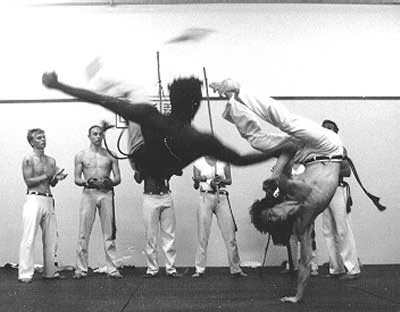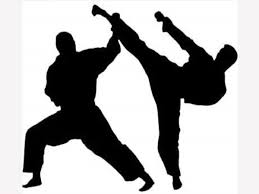SAMBO (part 1)
 SAMBO (from “self-defense without weapons”), a type of combat sports, as well as an integrated system of self-defense. It is divided into two types: sports sambo and combat. Sports sambo is a type of struggle with a large arsenal of painful and suffocating techniques, as well as throws used in the stance and in the stalls. Combat sambo (adopted in the special units of the Ministry of Internal Affairs and the Ministry of Defense) in addition to fighting techniques includes striking equipment, working with weapons, special equipment: binding, escorting, etc.
SAMBO (from “self-defense without weapons”), a type of combat sports, as well as an integrated system of self-defense. It is divided into two types: sports sambo and combat. Sports sambo is a type of struggle with a large arsenal of painful and suffocating techniques, as well as throws used in the stance and in the stalls. Combat sambo (adopted in the special units of the Ministry of Internal Affairs and the Ministry of Defense) in addition to fighting techniques includes striking equipment, working with weapons, special equipment: binding, escorting, etc.
Having originated in the USSR, sports sambo over time has become widespread outside the country. World and European championships are regularly held among men and women, and other competitions.
CARPET.
It is a square of 10 × 10 or 13 × 13 m of synthetic material (at least 5 cm thick). The surface of the carpet is covered with a special blanket. The working area of the carpet on which the scrum takes place is a circle with a diameter of 6–9 m. The width of the rest of the carpet (safety zone) must be at least 2 m at any point.
Two opposite corners of the carpet are indicated in blue (to the left of the referee’s table) and red (to the right).
EQUIPMENT OF WRESTLERS.
It consists of a special jacket in red or blue, sports pants and wrestling shoes. Men are allowed to wear a protective bandage (or sink), women are allowed to wear a top or a closed swimsuit.
During the performance it is forbidden to wear rings, chains and other objects that could cause injury to the athlete or his opponent.
AGE GROUPS AND WEIGHT CATEGORIES OF PARTICIPANTS OF COMPETITIONS.
The following age groups are distinguished (male and female): adolescents – 11–12 years old, youngest age — 13–14 years old, average age –– 15–16 years old, older age –– 17–18 years old, juniors 19–20 years old, adults –19 years and older, veterans – from 35 years (subdivided, in turn, into several categories).
The division into weight categories varies depending on the age group of the wrestlers. Teenagers and younger age:
28-30 kg, 32 kg, 35 kg, 38 kg, 41 kg, 45 kg, 49 kg, 53 kg, 57 kg, 62 kg, 67 kg, kg (boys);
26 kg, 28 kg, 30 kg, 32 kg, 34 kg, 36 kg, 38 kg, 41 kg, 45 kg, 49 kg, 53 kg, +53 kg (girls);
Average age: 38–40 kg, 42 kg, 45 kg, 48 kg, 51 kg, 55 kg, 59 kg, 63 kg, 68 kg, 73 kg, 78 kg, +78 kg (husband);
32 kg, 34 kg, 36 kg, 38 kg, 40 kg, 42 kg, 45 kg, 48 kg, 51 kg, 55 kg, 59 kg, +59 kg (women);
Elder age: 48 kg, 52 kg, 56 kg, 60 kg, 65 kg, 70 kg, 75 kg, 81 kg, 87 kg, +87 kg (husband);
40 kg, 44 kg, 48 kg, 52 kg, 56 kg, 60 kg, 65 kg, 70 kg, 75 kg, +75 kg (women);
Juniors and adults: 52 kg, 57 kg, 62 kg, 68 kg, 74 kg, 82 kg, 90 kg, 100 kg, +100 kg (husband);
48 kg, 52 kg, 56 kg, 60 kg, 64 kg, 68 kg, 72 kg, 80 kg, +80 kg (women);
Veterans: 62 kg, 68 kg, 74 kg, 82 kg, 90 kg, 100 kg, +100 kg (husband).
Competitions may be held without taking into account the weight category – the absolute weight category.
Participants are weighed once: the day before the start of the competition or the first day – two hours before the competition.
JUDGING.
The fight of the wrestlers is judged by a team consisting of: the head of the carpet, the referee, the side judge, the timekeeping judge, the technical secretary and the informing judge. The actions of the fighters are evaluated by a neutral judging panel: the head of the carpet, the referee and the side judge. Each of them makes appropriate decisions independently.
BEGINNING AND END OF THE BATTLE.
The wrestler in the red jacket is the first to enter the carpet and takes a place in the corresponding corner, then the wrestler in the blue jacket.
After the performance, the rivals converge in the center of the carpet and shake hands. They take a step back and start the fight on the referee’s whistle. The signal for the end of the fight is a gong blow.
CASE STUDY.
In sports sambo are allowed: throws, hooks, hooks, captures, painful techniques, deductions and other attacking and defensive actions. The fight is carried out in the rack and lying on the carpet (in the stalls).
During the bout, the wrestlers are not allowed to go abroad the carpet without the permission of the arbiter. The athlete may, with the permission of the arbiter, leave the carpet to tidy the suit. Medical assistance is provided on the carpet or on the edge of the carpet. A total of no more than 3 minutes is allotted for its rendering during one fight.
CAPTURE DURATION.
For adults and older – 5 minutes (husband) and 4 minutes (women), for middle and younger ages – 4 minutes (husband and women), for veterans – 4 minutes (husband) and 3 minutes (women). “Net time” is taken into account.
If the competition takes place on the same day, the number of fights for one athlete should not exceed 9, if more than one day – 5. For older and younger age, the acceptable limit is 7 fights in one-day competitions and 4 in multi-day ones.
The rest time between contractions should be at least 10 minutes for adults and juniors and at least 15 minutes for boys and adolescents.




